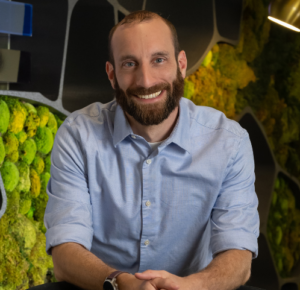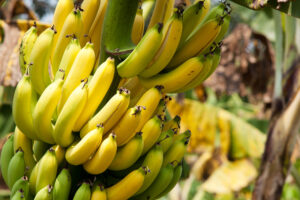Rescuing endangered foods crops
Matt DiLeo, PhD, head of R&D at Elo Life Sciences, describes the company’s goal as reimagining the future of food. “The way that we’re approaching this is to unlock nature’s abilities to make consumers’ favorite foods more delicious, healthy, and friendly,” he explained.
Gene editing is one of the tools helping Elo accomplish its mission. Here the company is focused on editing fruits and vegetables with an eye towards preventing the extinction of different fruits and vegetables due to factors like climate change. “There’s many cases where we know exactly what’s holding the plant back, we know the gene that we have to change but when you do this with traditional breeding it takes a very long time,” DiLeo noted.
The power of gene editing is that it is possible to make small changes to the genome and get results quickly.
While some companies in the agbio space have embraced CRISPR-based editing, Elo opted to develop its own proprietary gene. It’s a protein-based technology that uses a gene editing capability. “It’s actually the oldest of all the editing technologies” older than even TALENs and zinc fingers, DiLeo said. “Because it’s protein, you have to have a team that can build [them] it’s not something you can just order online. But it’s sensitive and you can tune it in a way that gives you additional advantages over CRISPR.”
For example, they are able to make edits to address a broader set of traits than may be possible for other technology providers. Additionally, because Elo owns the intellectual property, the company can commercialize its nucleases with whatever terms make the most sense for its partners, something that would be challenging to navigate with CRISPR, especially considering the current patent disputes.
Both of these factors are important to partners like Dole, who tapped Elo to work on a project aimed at creating resistant banana cultivars. The goal was to develop varieties of banana that are resistant to a Tropical race 4 (TR4) deadly fungus that has wiped out banana farms around the world. Banana producers have been scrambling to find varieties capable of resisting the fungus. As it turns out, cultivars of Cavendish bananas have been able to resist the fungus. Cavendish bananas, which are widely sold in North America and Europe, are grown in a small number of Central and South American countries due to the invasive infection. However, producers know that it’s only a matter of time before even those farms are under threat.
That’s why “the big banana companies have partnered up with universities and tech companies to try and find some solution to this problem,” says DiLeo, who is a plant pathologist by training. Working with Dole, Elo used its gene editing approach to make only the small changes to the Cavendish banana’s genome to strengthen its resistance to the fungus. When they started the project in June 2020, Elo’s scientists had not worked with bananas before. To understand just what they were up against, bananas have about 36,000 genes, and unlike humans, scientists have access to much less data on banana genes and their functions.
In the roughly four years since the project began, Elo has designed editing methods for the bananas and “done a deep analysis of all the molecular changes that we could make to bananas to make them resistant,” DiLeo says.
The company has grown its edited bananas in greenhouses and tested them with large inoculations of TR4 to ensure that the edits worked. Now the company is running field trials of the edited bananas in farms in Latin America that test their ability to resist infection.

Besides the banana project, Elo is also applying its gene editing capabilities to other partnerships including a project with a large NGO focused on improving crops like cassava for subsistence farming.
“We really want to have an impact on people’s health and well-being sustainability,” DiLeo said. “Having a clear path where you can do it in a way that is economically viable is really important and there’s a lot of exciting technologies out there. The ones that are going to change the world are going to find a way to make people’s lives better while saving their money.”
Read the Full Article